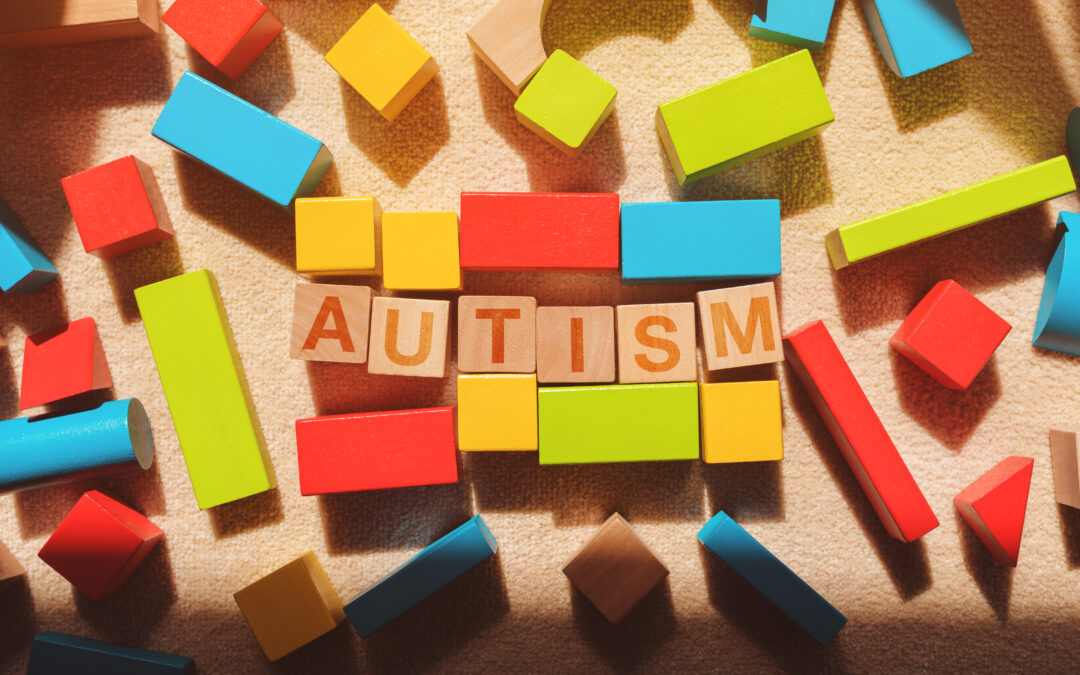Autism spectrum disorder (ASD) is a neurobehavioral disorder that impacts 1 in 36 children. ASD may produce delays in the development of communication, social interaction, and/or behaviors. Research has shown that the earlier that Autism signs are detected, the higher the probability of successful treatment. It is important to screen at an early age!
Here are 5 early warnings signs of Autism to watch for:
1. Social Interaction
Children may demonstrate difficulty engaging in social interactions with others, such as making eye contact, responding to social cues, and showing interest in others. They may also prefer to play alone and have difficulty understanding social norms and rules. Some examples include children that walk the perimeter of the playground and don’t seem to notice others. Other examples include the lack of back-and-forth conversation, a lack of awareness of personal space, speaking below or above a normal conversational level, and walking away from peers who approach them. Lastly, some children may engage in parallel play but will refrain from engaging in functional interactive play, sharing toys with others, completing cause-and-effect play sequences (working with a peer to build a lego tower, etc.), or they may play in ritualistic or rigid mannerisms. Note: A lack of an emerging imitation repertoire is of great concern and should be followed closely; imitation is a critical development skill.
2. Communication
There may be no vocal language or delayed speech development, difficulty understanding and using expressive or receptive language, and they may communicate using unusual gestures or facial expressions. It is also important to note that not all children diagnosed with autism lack vocal-verbal communication or delayed speech. In fact, language development may be advanced; spoken words may occur but aren’t functional. To illustrate this point, some children may have 50 + spoken words that are outlined on the CDC developmental checklist as developmentally appropriate, but they may only repeat their favorite lines from TV shows or movies, or speak about one topic in a perseverative manner.
Additional communication examples include unintelligible speech or the poor articulation of words, referring to themselves in the third person, speaking in a monotone or a “sing-song” voice, the inability to identify common objects, they may be unable to imitate the actions of others and they may not follow instructions. Lastly, children may echo spoken language instead of answering questions (e.g., “What do you want for lunch?” is followed by “lunch”) or other forms of non-functional speech.
3. Repetitive Behaviors
These learners may engage in motor or vocal repetitive behaviors, such as pacing, watching fans spin or lights blink, opening and closing doors, finger waving or hand flapping, spinning items, or lining up toys. They may also have specific interests that they focus on intensely and have difficulty shifting their attention to other things. These behaviors are called stereotypic or stereotypical behaviors, sometimes referred to as “stimming.”With vocal stereotypy, children may repeat lines from their favorite movie or TV show. These children may have fully developed expressive language and an expanded vocal repertoire, but they lack the ability to functionally communicate with others. Vocal stereotypy is often mistaken for pretend play; when caregivers interact and imitate the stereotypy, it reinforces the behavior. Other forms of stereotypy may emerge such as visual stereotypy (blinking lights, placing objects or items in front of eyes, dangling beads in front of their eyes) or other types of repetitive behaviors. Further, stereotypy can be described as an “obsession” and may be mistakenly diagnosed with Obsessive Compulsive Disorder (OCD). For individuals with a more advanced vocal repertoire, they may fixate on preferred topics such as Star Wars, Legos, Coco Melon, Disney, Minecraft, etc. When interacting with these items, they may have a specific mannerism when they play, have a position where the toys are placed, and engage in rigid play behaviors by themselves or with others.
4. Sensory Issues
Another sign to watch for is heightened or diminished sensitivity to sensory stimuli, such as sounds, lights, textures, and smells. This includes walking on tippy toes, placing their hands over their ears when exposed to loud noises, hiding their face from lights, wearing a certain texture of clothing, and eating certain foods or placing restrictions on food or drink items. Sometimes, these children are mistakenly classified as picky eaters, when they are actually engaging in restrictive or ritualistic food behaviors. If a child will only eat yellow Kraft macaroni and cheese on a 4” blue Mickey Mouse plastic plate with a red fork, this is a cause for concern. Other examples include severe tantrums over spilling a drink on their shirt or having mud on their hands.
5. Maladaptive Behaviors
Many children with ASD engage in high rates of tantrum, aggression, self-injurious or dangerous/destructive behaviors. If a child is experiencing challenging behaviors with the slightest change of routine, this may be cause for concern. Other odd behaviors, such as hiding under a table and barking like a dog when instructed to work, should be discussed. For neurotypical children, it may be developmentally appropriate to experience separation anxiety from their parents during the drop off process. One may expect slight crying, hiding or other minor maladaptive behaviors. But, if a child falls to the floor and bangs their head against the floor, or bites themselves or becomes very aggressive with their teacher, these behaviors should be evaluated.
If you suspect your child may have signs of Autism, don’t wait! Speak to your pediatrician and ask for a referral to a neuropsychologist or developmental pediatrician for a more advanced evaluation. If you have questions about Autism and potential treatment options, FUNdamental Development ABA has a team of highly experienced clinicians who would be happy to speak with you. Reach out to us at www.fundamental-aba.com to learn more!






